Are those Holes In Snake Plant hampering your plant’s health and beauty? Discover the potential reasons and their solutions!
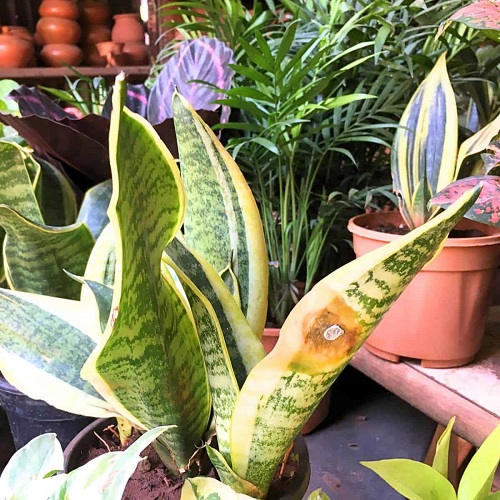
Snake plants (Sansevieria trifasciata) are popular among houseplants due to their low maintenance needs and air-purifying capabilities. However, if you’ve recently observed unusual Holes in Snake Plant, this article is for you!
Bored With The Same Variety? Check Out the Best Alternatives Here
Why Care About Holes?
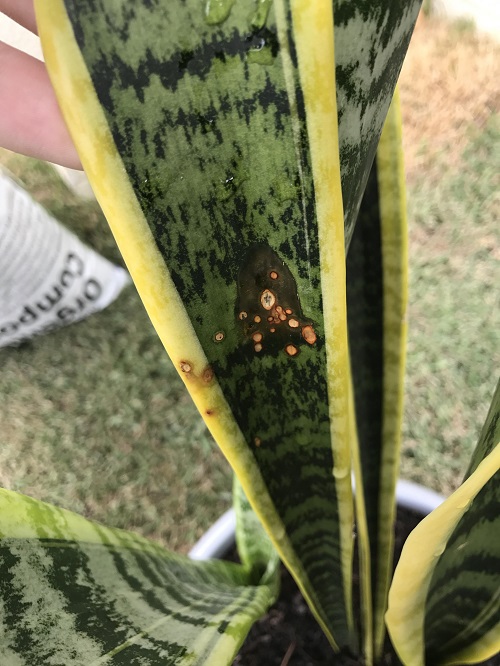
Before we talk about the solutions, it’s important to understand why holes in your snake plant are a big deal. The holes do more than just tarnish its appearance. They serve as early warning signs of potentially bigger health issues your plant might be facing. Consider those holes an urgent alert, signaling that something in the care routine isn’t right.
Taking timely action will not only restore your plant’s appearance but also bar any traces of health concerns, ensuring it continues to purify your home’s air.
Holes in Snake Plant—Potential Reasons And Solution
1. Pest Infestation
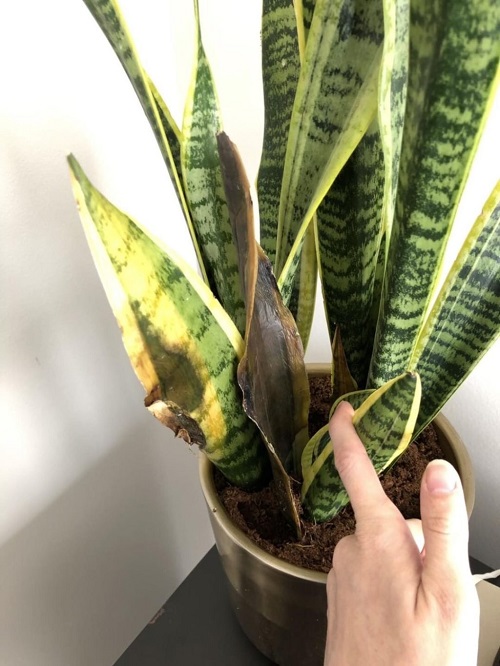
When it comes to Holes in Snake Plant, pests are most likely the culprits that are a major concern as well. Mealybugs, spider mites, and aphids puncture the sturdy leaves, leading to holes or spots. These pests often hide under the leaves or in the soil.
Signs:
- Look for small, round holes or discoloration on the leaves.
Solution:
- Spray the affected areas with insecticidal soap.
- You can also use DIY sticky traps placed near your snake plant can capture the plant bugs before they wreak more havoc.
- Isolate the affected plant to prevent the pests from spreading to other plants.
Pro Tip: The application of a thin coating of natural leaf wax can add a layer of protection against pests and keep your plant looking vibrant.
2. Physical Damage
Physical damage is a common cause of holes in snake plants. This often occurs due to rough handling during repotting, falling objects, or curious pets nibbling on the leaves.
Signs:
- In cases of physical damage, the holes in snake plant leaves often appear as large and irregular, sometimes with frayed edges.
Solution:
- Find a secure location where the snake plant is less likely to experience physical trauma.
- Cut away damaged leaves using sterilized scissors to prevent the spread of infection.
- If pets are the cause, consider using pet barriers or placing the plant out of reach.
3. Nutrient Deficiency
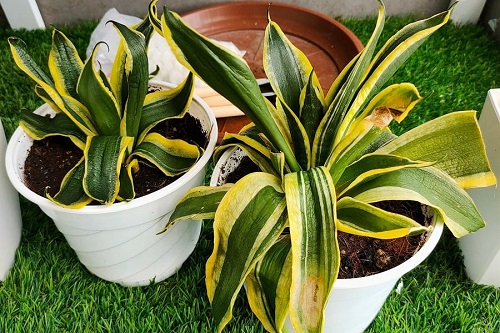
Nutrient deficiencies usually stem from poor soil quality, imbalanced fertilization, or overwatering that leaches essential elements like potassium or magnesium from the soil.
Signs:
- Holes that are accompanied by yellow or brownish rings on the leaves often signal a nutrient deficiency.
Solution:
- Use a fertilizer specifically formulated for snake plants, rich in potassium and magnesium.
- Perform a soil test to identify missing nutrients and adjust accordingly.
- Keep an eye on new leaf growth as an indicator of improvement.
4. Stress from Seasonal Changes
Seasonal stress in snake plants is often due to fluctuations in temperature and humidity levels, particularly during transitions from winter to spring or summer to fall. Also, changing angles and durations of natural sunlight can affect the plant’s health.
Signs:
- Small to medium-sized holes may appear during seasonal transitions, such as from spring to summer or fall to winter.
Solution:
- Use a humidifier to maintain optimal moisture levels.
- Implement a thermostat to keep temperature fluctuations minimal.
- Ensure the plant receives consistent, indirect light, especially during winter.
5. Transplant Shock
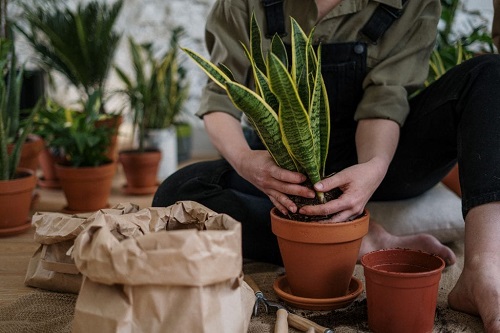
Transplant shock usually results from incompatible new soil, disturbance to the root system during the repotting process, or a sudden change in environmental conditions like light or temperature.
Signs:
- If you notice holes shortly after repotting, your snake plant is likely experiencing transplant shock.
Solution:
- Ensure that the watering schedule, light exposure, and temperature remain consistent post-transplant.
- Avoid overly compacting the soil, which can stress the root system.
- Watch for signs of recovery in new leaf growth and root development.
Expert Tips to Prevent Holes in Snake Plants
1. Don’t Just Water, Water Wisely

You might think watering your snake plant is a no-brainer, but there’s more to it than meets the eye. Overwatering can cause root rot, which weakens your plant and makes it more susceptible to holes from pest damage. On the flip side, underwatering can stress your plant and cause nutrient imbalances, leading to holes.
What to Do: Use a water meter or stick your finger an inch into the soil to check its moisture level. If it’s dry, it’s time to water. Moreover, consider using filtered or rainwater instead of tap water to avoid harmful chemicals that can stress your plant.
2. Shield Those Leaves with Neem Oil
Here’s a secret many don’t discuss—neem oil can act as both a pesticide and a leaf-shine solution. It’s natural and non-toxic, which makes it perfect for indoor use.
What to Do: Mix neem oil with water and spray it lightly over your snake plant leaves once a month. This won’t just fend off pests but also keep the leaves shiny and vibrant.
3. Control the Temperature and Light Imbalances
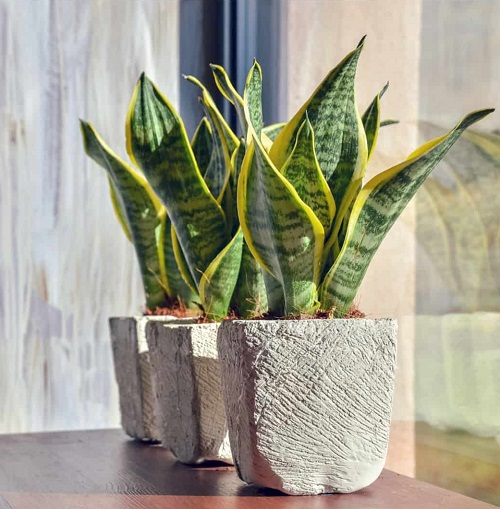
Your snake plant might suffer from wilting, discoloration, slow growth, and even holes in its leaves if it’s not getting the right balance of temperature and light. Too much warmth or inadequate daylight hours can stress your plant, making it susceptible to various issues.
What to Do: Aim for a daily dose of 10–12 hours of moderate light. Keep the plant in a location with warmer temperatures during the day and cooler ones at night. If your home doesn’t receive enough natural light, consider adding supplemental lighting units to fill the gap.
4. Boost Plant Health with Aspirin
You’d be surprised how a simple over-the-counter aspirin can work wonders for your snake plant. Aspirin contains salicylic acid, which can help trigger the plant’s internal defenses against stress and diseases.
What to Do: Dissolve an aspirin tablet in a gallon of water and use this to water your plant. Do this every couple of months for a boost in plant health.
5. Utilize the Power of Epsom Salts
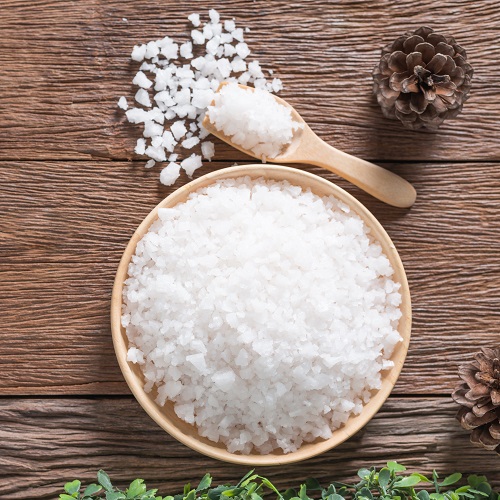
Epsom salt isn’t just for relaxing baths; it’s also a hidden ally in your plant care toolkit. Containing a good amount of magnesium it can help resolve nutrient deficiencies that might be causing those holes in your snake plant leaves.
What to Do: Epsom salt is another hidden gem. Mixing a tablespoon of Epsom salt in a gallon of water and using it to water your plant can provide a much-needed magnesium boost.
6. Aerate the Soil Periodically
One thing you might overlook is soil aeration, which is critical in preventing holes in your snake plant. Compacted soil can inhibit root growth and reduce nutrient absorption, leading to weak plants and, yes, holes in the leaves.
What to Do: Once a month, gently poke a few holes in the soil using a chopstick or pencil. This will improve air circulation and encourage healthier root systems.
7. Check for Night Crawlers
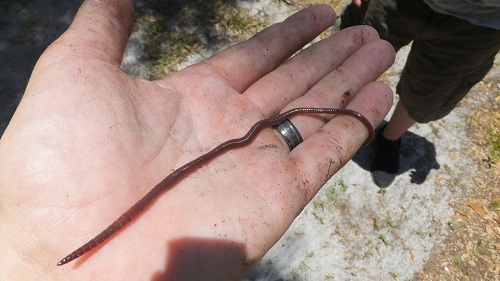
Many of the insects that attack snake plants are nocturnal. Wouldn’t it be great to catch them in the act?
What to Do: Once a week, take a flashlight and inspect your plant at night. Early detection can help you address pest problems before they escalate.
Key Takeaways
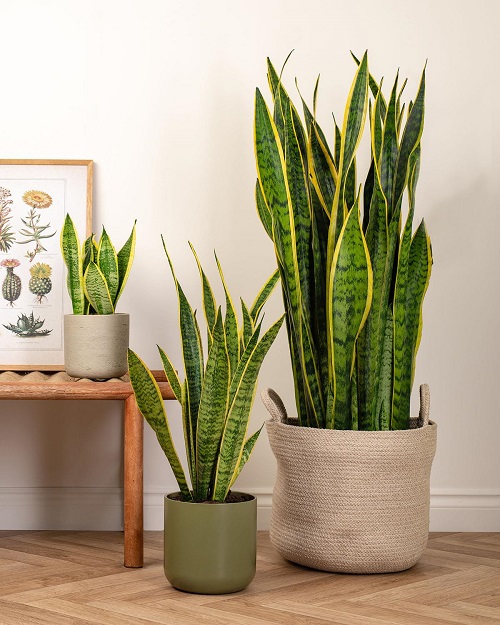
Most of the plant issues can be fixed with a bit of care and attention. Now that we’ve walked through the key reasons and practical solutions, you’re well-equipped to turn things around for your leafy friend. From keeping an eye on pests to lesser-known hacks like using aspirin or Epsom salts, you have a variety of strategies at your disposal. Remember, your snake plant does more than just sit pretty in the corner; it also purifies your home’s air. So it’s worth the effort to keep it in tip-top shape.






